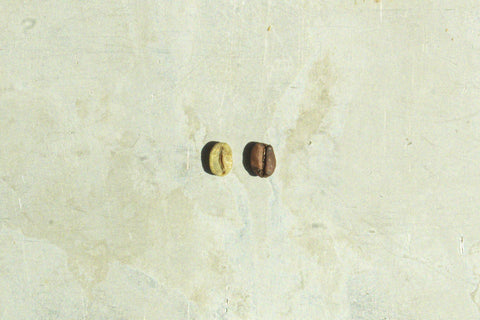Technical information
|
coffee tree size Dwarf – large |
altitude Low – high |
nematode Sensitive – resistant |
|
grain size |
rust resistance Sensitive – resistant |
high altitude quality potential Very weak – exceptional |
Origin and history of Coffea arabica
Coffea arabica , the world's most prized coffee species, originates from the mountainous rainforests of southwestern Ethiopia, a region with a tropical climate conducive to coffee cultivation. It is a natural hybrid between two wild species: Coffea canephora (also known as Robusta coffee) and Coffea eugenioides (also known as Rubiaceae) . This hybridization, according to the latest genomic research, dates back approximately 600,000 to one million years.
Arabica was first domesticated in Yemen in the 15th century, before spreading to other parts of the world such as India, Indonesia, and then the Americas. Today, global coffee production relies heavily on this species, which accounts for approximately 60 to 70% of coffee production, or millions of 60-kg bags exported each year.
Botanical characteristics and growing conditions
Coffea arabica belongs to the genus Coffea. It is a shrub with dark green leaves, reaching 2 to 4 meters in height. It is self-pollinating (self-fertile), which means it can reproduce by self-pollination, unlike Coffea canephora , which requires cross-pollination.
Arabica coffee requires rigorous growing conditions. It is cultivated at high altitudes, generally between 1,200 and 2,200 meters, in areas with a mild tropical climate. The ideal climatic conditions for Arabica coffee are between 15°C and 24°C, with well-distributed rainfall and rich, acidic, and well-drained soil. These factors directly influence the organoleptic profile of the coffee beans.
However, this variety is more fragile: it is less disease-resistant than robusta beans and requires more attention, which increases production costs. Initiatives such as those of World Coffee Research play an important role in the genetic improvement of Arabica, particularly through the development of more resistant hybrid varieties.
Chemical composition and aromatic potential
Arabica coffee contains approximately 1.2% caffeine, much less than Robusta coffee, making it milder and more subtle. It is also higher in sugars (up to 9%) and lipids, elements that positively influence the development of aromas when roasting green coffee.
This chemical composition contributes to the aromatic richness of specialty coffee. Grown at high altitudes, green Arabica coffee develops a unique sensory complexity with floral, fruity, tangy, or chocolatey notes, depending on the processing method used.
Processing methods and impact on taste
Post-harvest processing methods have a major impact on the final taste of coffee beans:
- The washed, or wet, process enhances acidity and clarity of flavor. It is common in Ethiopian and Central American coffees.
- The natural processing, or dry method, involves drying the whole fruit, giving the coffee sweet and fruity aromas, with a denser body.
- The honey (semi-washed) method offers a good balance between sweetness, acidity and body.
These methods directly influence the cup profile of specialty coffee, particularly for espresso coffee preparations.
The descendants of Coffea arabica
Coffea arabica includes several varieties of coffee, each with its own characteristics and adaptation to different soils. Here are some notable examples:
- Typica: ancestral variety, sweet and floral.
- Bourbon: sweet, round and well balanced.
- SL28 and SL34 : Popular in Kenya, known for their bright acidity.
- Geisha (or Gesha): highly sought after, famous for its floral aromas and great complexity.
These varieties constitute a living heritage sometimes called heritage coffee. They represent the diversity and richness of coffee culture, with unique flavor profiles depending on their origin and processing method.
Countries like Costa Rica have placed a strong emphasis on fine varieties such as Geisha and Bourbon, which has allowed them to position their production in the category of specialty coffees with very high added value.
Cultural challenges in the face of climate change
Coffee cultivation today faces several challenges, the most significant of which are climate change, biodiversity loss, and declining productivity in certain areas. Extreme weather conditions affect flowering, cherry ripening, and the final quality of Arabica coffee.
Faced with this situation, Coffea canephora is sometimes considered as an alternative, as it is more robust, but it does not offer the same level of sensory quality as Arabica. This is why many research institutions are investing heavily to improve the resilience of Arabica varieties while maintaining high cup quality.

Conclusion
Coffea arabica is undeniably at the heart of global quality coffee production. It embodies the finesse and sensory richness of specialty coffee, thanks to its demanding growing conditions, varied processing methods, and countless coffee varieties.
For any coffee consumer who cares about origin, taste, and sustainable farming practices, Arabica remains the gold standard. Research continues to play a key role in preserving this plant heritage in the face of future challenges.



Comments (0)
There are no comments for this article. Be the first one to leave a message!